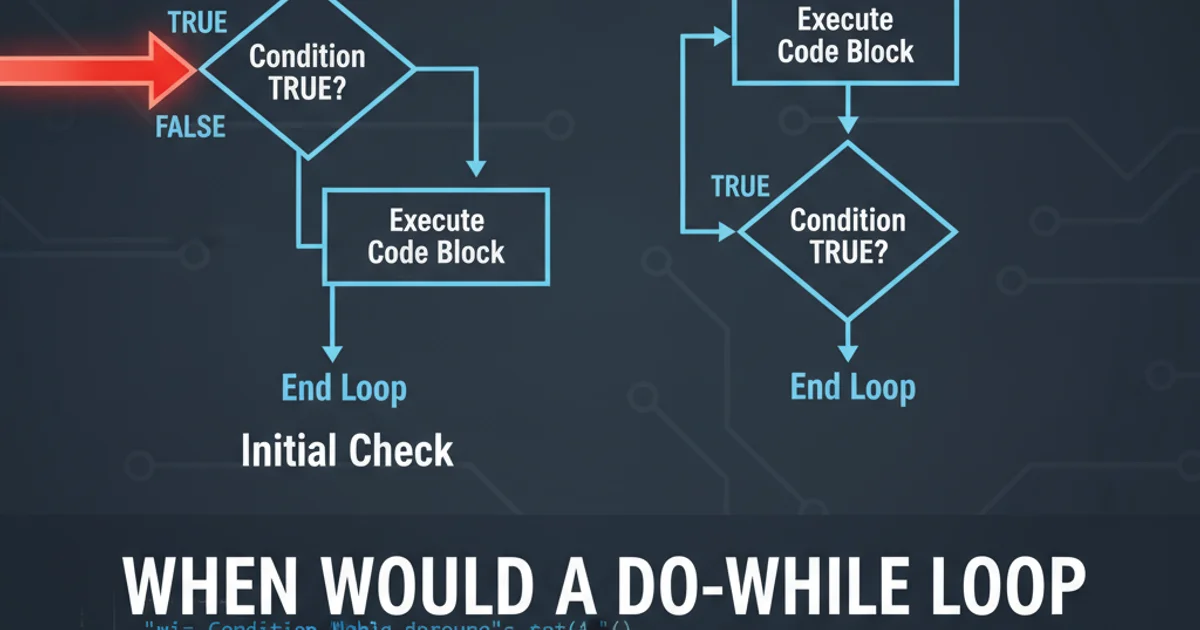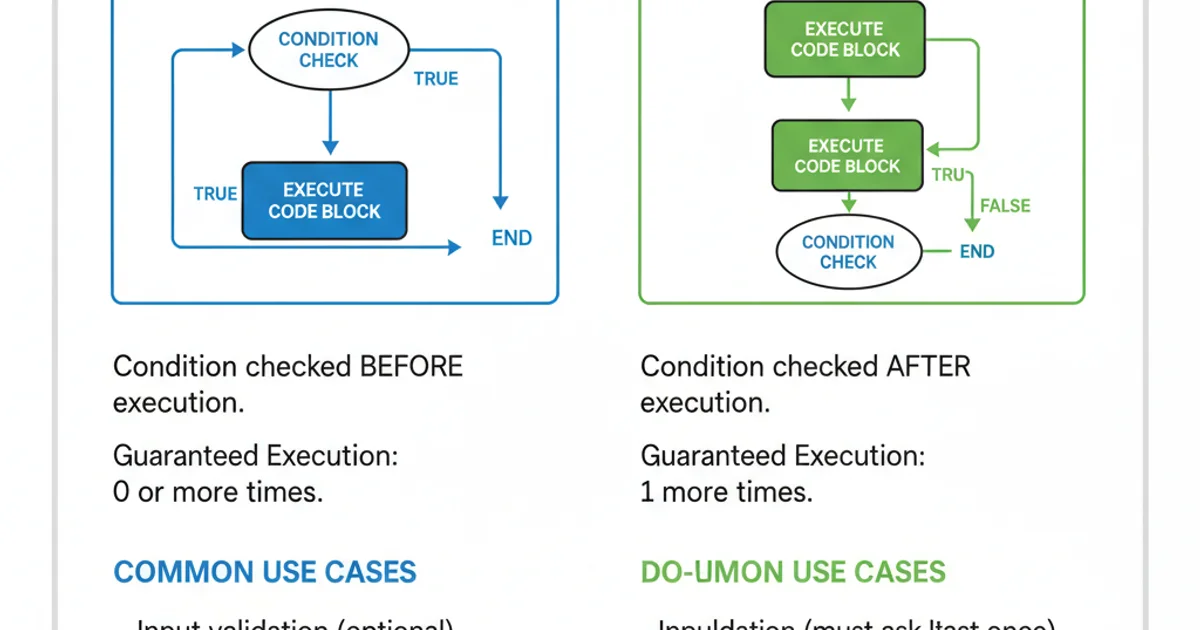When would a do-while loop be the better than a while-loop?
Categories:
While vs. Do-While: Choosing the Right Loop for Your Code

Explore the fundamental differences between while and do-while loops in programming, and learn when each is the optimal choice for controlling program flow.
Loops are fundamental control structures in programming, allowing a block of code to be executed repeatedly. Among the most common are the while loop and the do-while loop. While they both serve the purpose of iteration, their key distinction lies in when the loop's condition is evaluated. Understanding this difference is crucial for writing efficient, correct, and robust code.
Understanding the While Loop
The while loop is an entry-controlled loop. This means that the condition for loop execution is checked before the loop body is executed even once. If the condition evaluates to false initially, the loop body will never execute. This makes the while loop suitable for situations where there's a possibility that the loop's actions might not need to be performed at all.
int count = 0;
while (count < 5) {
System.out.println("While loop iteration: " + count);
count++;
}
System.out.println("While loop finished. Final count: " + count);
A basic while loop example in Java.
flowchart TD
A[Start] --> B{Condition is true?}
B -- Yes --> C[Execute Loop Body]
C --> B
B -- No --> D[End Loop]
D --> E[Continue Program]Flowchart illustrating the execution of a while loop.
Understanding the Do-While Loop
In contrast, the do-while loop is an exit-controlled loop. This means the loop body is executed at least once before the condition is evaluated. After the first execution, the condition is checked, and if it's true, the loop continues. If it's false, the loop terminates. This characteristic makes the do-while loop ideal for scenarios where you need to perform an action at least once, regardless of the initial state, such as reading user input.
import java.util.Scanner;
public class DoWhileExample {
public static void main(String[] args) {
Scanner scanner = new Scanner(System.in);
int choice;
do {
System.out.println("\nMenu:");
System.out.println("1. Option A");
System.out.println("2. Option B");
System.out.println("3. Exit");
System.out.print("Enter your choice: ");
choice = scanner.nextInt();
switch (choice) {
case 1:
System.out.println("You chose Option A.");
break;
case 2:
System.out.println("You chose Option B.");
break;
case 3:
System.out.println("Exiting program.");
break;
default:
System.out.println("Invalid choice. Please try again.");
}
} while (choice != 3);
scanner.close();
}
}
A do-while loop used for a menu-driven program, ensuring the menu is displayed at least once.
flowchart TD
A[Start] --> B[Execute Loop Body]
B --> C{Condition is true?}
C -- Yes --> B
C -- No --> D[End Loop]
D --> E[Continue Program]Flowchart illustrating the execution of a do-while loop.
When to Choose Do-While Over While
The choice between a while and do-while loop boils down to whether the loop body must execute at least once. Here are common scenarios where a do-while loop is the better choice:
- User Input Validation: When you need to prompt the user for input and then validate it, you want the prompt to appear at least once. If the input is invalid, you re-prompt.
- Menu-Driven Programs: Similar to input validation, a menu should always be displayed to the user at least once before checking their choice to continue or exit.
- Performing an Action Before Checking a State: Any situation where an initial action needs to be taken to establish a state that the loop condition will then evaluate (e.g., fetching data before checking if more data is available).
- Guaranteed First Execution: When the logic dictates that the code block inside the loop must run at least one time, regardless of the initial condition.
do-while loop is often a natural fit. If it's "while this condition is true, do this," then a while loop is more appropriate.Key Differences Summarized
To solidify your understanding, here's a quick comparison of the two loop types:

Comparison of while vs. do-while loops.
In conclusion, while both while and do-while loops are powerful tools for iteration, their distinct execution flows make them suitable for different programming contexts. By carefully considering whether your loop body needs to execute at least once, you can make an informed decision and choose the most appropriate loop for your task, leading to clearer and more efficient code.